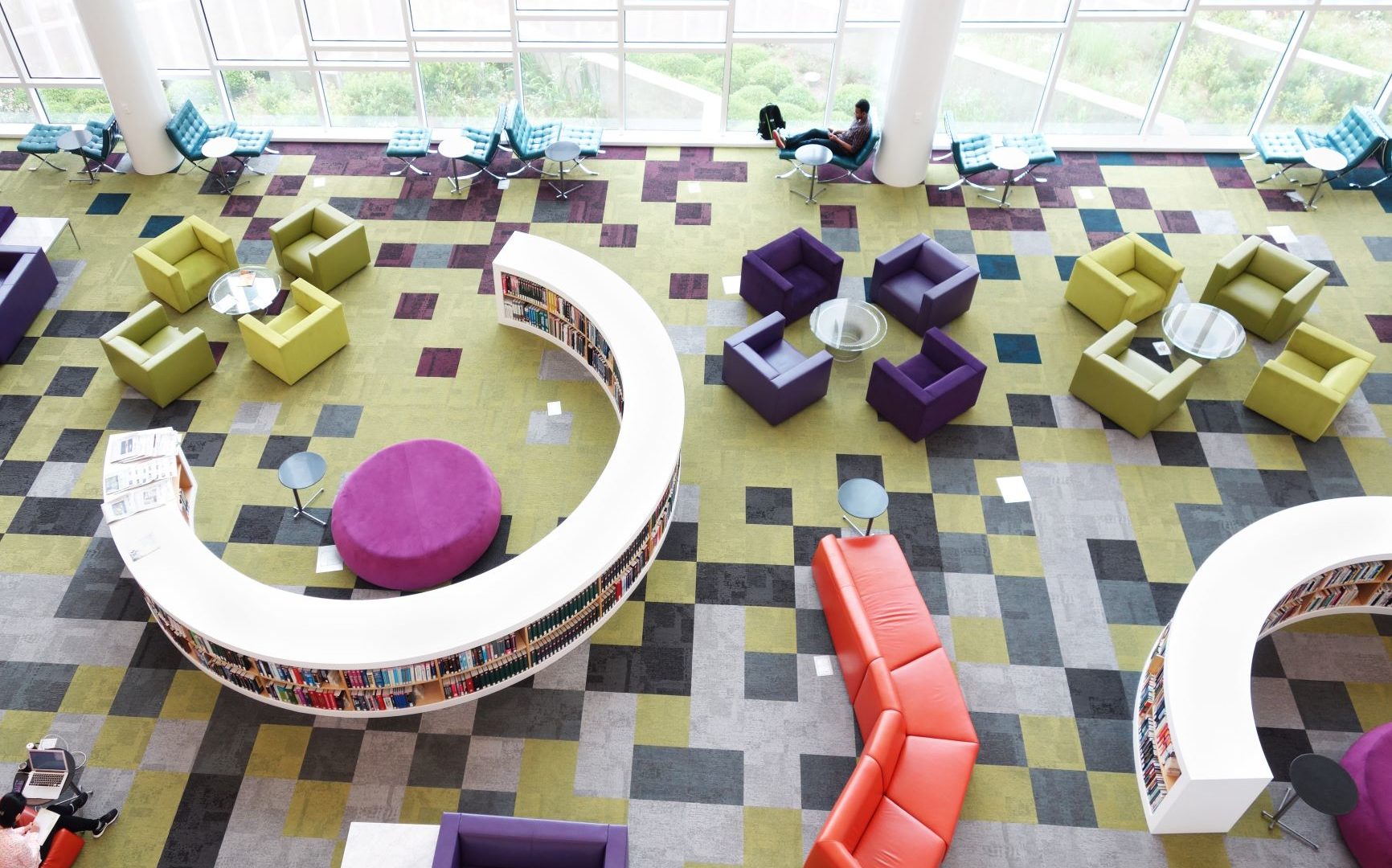Evolutions in technology and pedagogy have created a demand for new types of learning spaces. Educators are finding that students work and learn best in environments that are fun, engaging, and collaborative. For this reason, school libraries are beginning to change and evolve to include more flexible seating options.
How School Libraries Are Changing
Today, more and more schools are starting to learn that students learn best when they can interact and engage with one another. This is prompting a change in the way that learning spaces are designed.
Many schools are starting to focus on not only changing the way that classrooms are set up, but also areas that learning takes place, including libraries.
School libraries are no longer being used as a storage facility to house books. Rather, more schools are starting to see the benefits of turning libraries into a community space.
By creating spaces where students can work together on projects or form small groups for reading or discussions, school libraries are becoming a center for a variety of activities.
Teachers can plan for activities that require more space and students can find different places where they can either focus on work independently or work with their peers outside of the classroom.
This has called for a need for flexible seating options. Flexible seating provides a variety of benefits in libraries.
One, it creates seating that is more comfortable and conducive to hands on activities. Students enjoy their work more and stay more engaged when they are given better seating options like bean bags, high or low tables, or even the types of sit-stand desks that can be found in most modern offices today.
Furthermore, educators can rearrange furniture more easily to suit different activities without worrying about taking up too much space or breaking tables or chairs with wooden legs.
Additional Benefits of Flexible Seating for School Libraries
In addition to the advantages described above, flexible library furniture and seating options can benefit schools in other exciting ways as well by helping to save resources, reduce waste, and save space.
Here are some of the additional benefits schools can enjoy from multipurpose and adaptable furniture:
Easy to rearrange
Schools are constantly changing and evolving even on the individual level. As schools grow in size or adapt new approaches to learning, they may find that they need to rearrange spaces or use rooms for different purposes. Adaptable furniture used in libraries can easily be arranged as needed or moved to different rooms to be used for different purposes.
Saves space
Many flexible seating options save space as well. Benches that include hidden storage areas can be used to store books and supplies. Rolling chairs can be used as both workspaces for students and also pulled up to conference tables for staff meetings, eliminating the need for multiple pieces of furniture. In this way, flexible seating can help schools save space.
Creates a fun, engaging learning environment
While the practical benefits of flexibility seating are certainly useful for schools, by far the greatest advantage of collaborative spaces and modern library furniture is how it promotes student growth and learning. Fun seating options provide a way for get students excited about learning and become invested in the activities that they’re doing.
Incredible transformations occur when students are given the right space to work and learn in!
This article is courtesy of The Supple Collection, a unique brand of sustainable furniture for learning environments, www.thesupplecollection.com.










